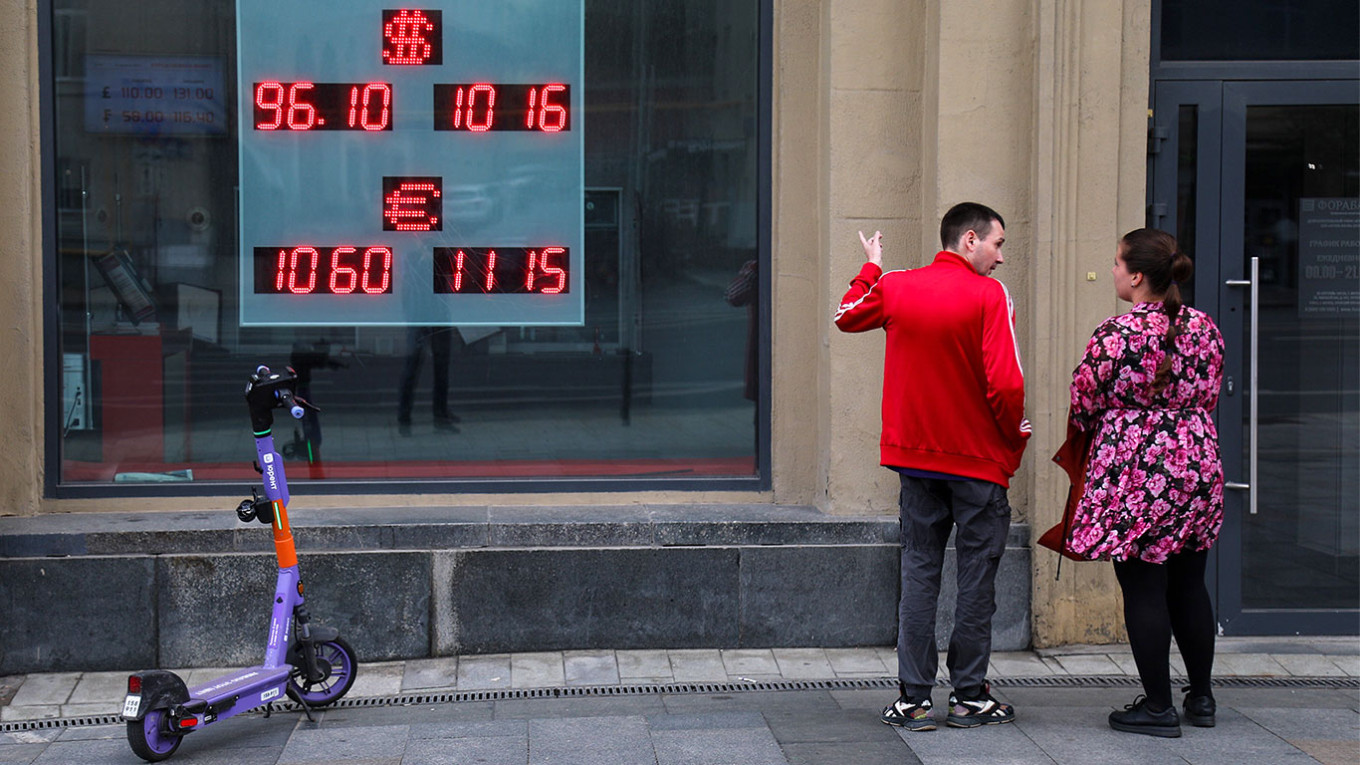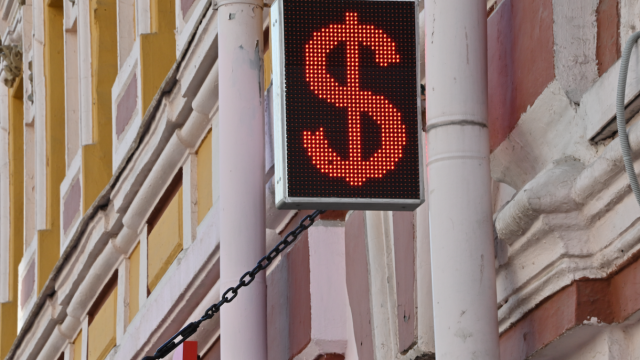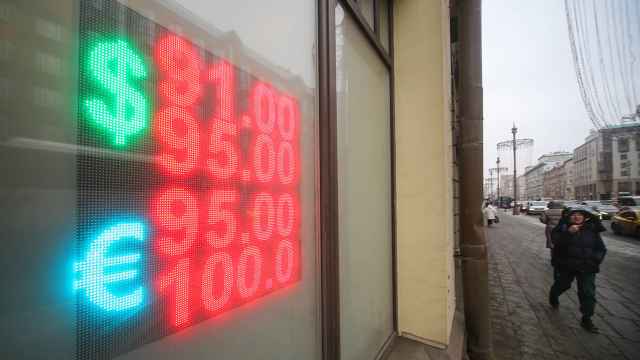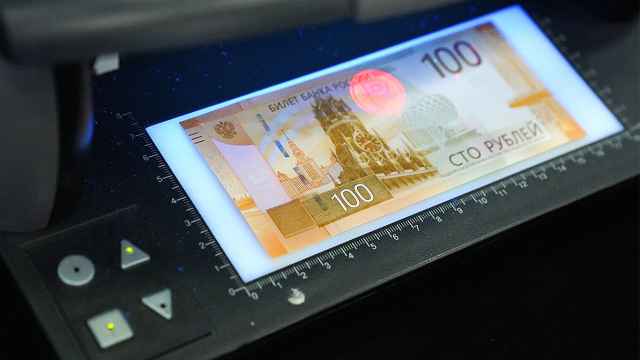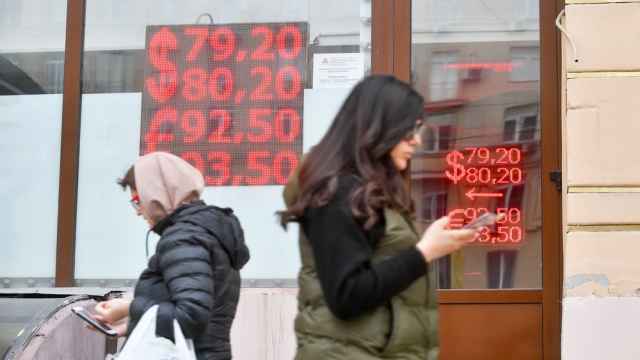The Russian ruble’s slide past 100 against the dollar has exposed a multi-billion dollar dilemma at the heart of the Russian economy: how can the Kremlin carry on funding its war against Ukraine without triggering a surge in inflation and fresh fears of an economic crisis at home?
The ruble dipped below the crucial level on Monday for the first time since March 2022, when the Russian economy appeared to be on the brink of collapse amid Moscow’s invasion of Ukraine and a cascade of Western sanctions.
Last year, sweeping capital controls, an emergency interest rate hike and a rapid surge in the production of guns, missiles, tanks and artillery shells to be used against Ukraine saved the ruble and helped Russia’s economy defy predictions of a double-digit hit to GDP.
But with the war having raged for 18 months and more Western sanctions now in place — such as an oil price cap and drastic cuts in European purchases of Russian gas — the ruble’s decline underscores the challenges Moscow will face in an attempt to repeat last year’s fire-fighting efforts.
The ruble has lost half its value since a peak in June 2022, a devaluation that has raised the specter of a familiar foe — inflation.
Prices are once again rising faster than the government’s official 4% target. Food prices, which usually fall in the summer months, are steadily increasing and the central bank’s forecast — penned before the latest currency slide — foresees inflation accelerating toward 6.5% by the end of this year.
“The collapse of the ruble has already triggered an inflationary spiral. It can only be stopped by bringing the rate back under 90,” said Yevgeny Suvorov, an economist at Moscow-based CentroCredit Bank.
For Russians who have grown accustomed to economic crises in the three decades since the fall of the Soviet Union, the ruble exchange rate has powerful symbolic importance as a marker of the economy’s overall health. Economists say the fall into triple-digit territory — a vital psychological threshold — could further push Russians to move their assets out of the country, or at least, into other currencies.
“It’s obvious that the ongoing weakening of the ruble will not only stoke inflation even more, but will undermine trust in the currency itself and the economy in general,” Yevgeny Kogan, an economics professor at Moscow’s Higher School of Economics (HSE), wrote in a post on his Telegram channel.
Foreign cash holdings are up 23% this year among Russians while outflows to foreign banks have jumped 41%, he noted.
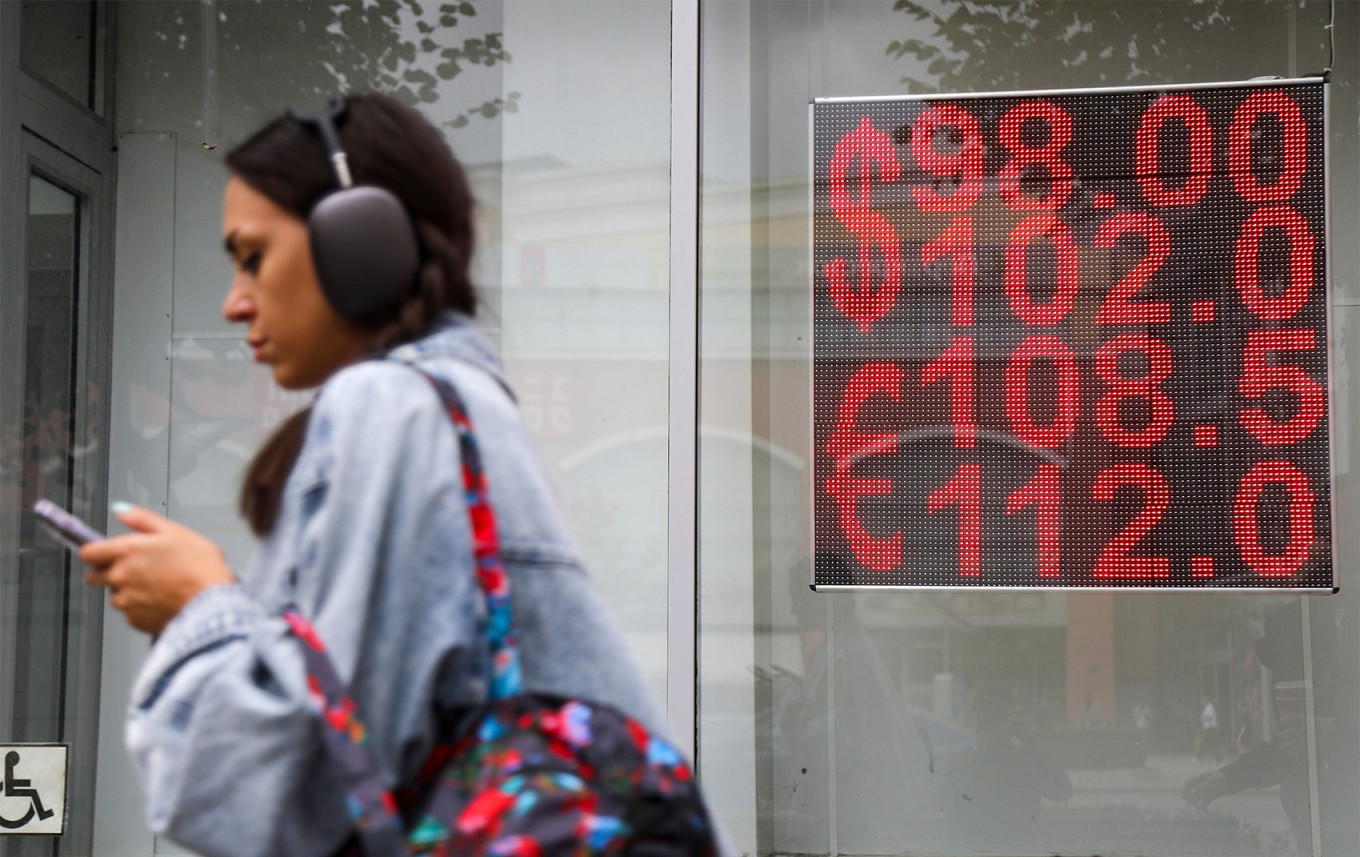
Kogan said a sustained breakthrough of 100 rubles against the dollar could lead to serious price hikes by companies that use imported goods or equipment, and it might trigger financial panic among the population.
Across Russian society, a feeling that the government cares little about the falling ruble is spreading, with talk of how the Kremlin benefits from a falling currency cropping up across Russian social media.
A weaker currency means Russia’s energy exports, dictated by global dollar-based oil prices, will funnel more rubles into the government’s coffers.
The amount of rubles earned for every barrel of Russia’s Urals blend of crude oil has more than doubled this year — from 3,320 on Jan. 1 to 7,300, according to market data.
Overall, every 10-point slide in the value of the ruble against the dollar — from 90 to 100, for instance — brings in an extra 1 trillion rubles ($10 billion) for the Russian state, Renaissance Capital’s Sofya Donets calculates. The same fall adds 0.5-1 percentage point to inflation, Kogan estimates.
Those extra funds are sorely needed by Moscow, which has chalked up a 2.8-trillion ruble ($28 billion) budget deficit so far this year.
A weaker ruble means Russia can buy more arms, ammunition and pay higher salaries for soldiers, making devaluation an attractive short-term solution to the Kremlin’s budget woes and its top priority — funding the invasion of Ukraine. Battling inflation and dealing with the other domestic costs of a weak currency, can come later.
“It’s more important to get through the next few months, or until spring, and in the long run, if things turn out worse because of this, then it doesn't really matter. It matters, but what matters much more is the ability to be able to wage war and pay bills in the next 4-6 months,” Iikka Korhonen, head of the Bank of Finland Institute for Emerging Economies (BOFIT), said of the Kremlin’s logic.
With spending on the war the Kremlin’s overriding priority, analysts are poised for potentially drastic action from the Central Bank, whose main task since the invasion has been to mitigate the domestic economic impacts of Russia’s war.
Responding to the currency's slide, the Central Bank on Monday afternoon said its board of directors would hold an emergency meeting on Tuesday — its first extraordinary session since Feb. 28, 2022 — where it is set to raise interest rates from their current level of 8.5%.
The ruble temporarily strengthened above 100 on the news.
Last week, Russia's Central Bank suspended foreign currency purchases until at least the end of the year under its so-called “budget rule,” which would typically funnel excess profits from oil and gas sales into foreign currency holdings. But that measure had little effect in halting the ruble's descent. Yet more serious moves are not being ruled out.
“Monetary policy is by no means the only tool in the financial authorities’ arsenal,” said Alexander Bakhtin, an investment strategist at Moscow-based BCS brokerage.
“A return to mandatory regulations on the sale of foreign currency earnings and strengthening of currency controls is possible.”
But it remains far from clear that new capital controls would have the same effect in stopping the slide as it did 18 months ago. The shrinking of Russia’s current account surplus — down from $165 billion in the first seven months of 2022 to $25.2 this year — has significantly changed the ruble’s basic supply-and-demand dynamics.
The Central Bank has repeatedly indicated the strictest kinds of capital controls, like forced conversions of foreign currency earnings, should only be temporary measures and reserved for major financial crises. But with the Kremlin’s dead set on marshaling resources for its war, other options may be limited.
“Previously, the Central Bank was always very reluctant to take those kinds of actions,” said BOFIT’s Korhonen. “Now with the war, the cost-benefit analysis has changed, so those measures are always there. But the thing with capital controls is, the longer they are in place, the harder the costs will be.”
A Message from The Moscow Times:
Dear readers,
We are facing unprecedented challenges. Russia's Prosecutor General's Office has designated The Moscow Times as an "undesirable" organization, criminalizing our work and putting our staff at risk of prosecution. This follows our earlier unjust labeling as a "foreign agent."
These actions are direct attempts to silence independent journalism in Russia. The authorities claim our work "discredits the decisions of the Russian leadership." We see things differently: we strive to provide accurate, unbiased reporting on Russia.
We, the journalists of The Moscow Times, refuse to be silenced. But to continue our work, we need your help.
Your support, no matter how small, makes a world of difference. If you can, please support us monthly starting from just $2. It's quick to set up, and every contribution makes a significant impact.
By supporting The Moscow Times, you're defending open, independent journalism in the face of repression. Thank you for standing with us.
Remind me later.



